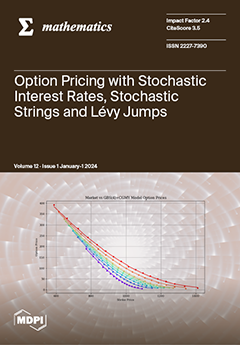We continue studying the
-Ricci vector field
on a Riemannian manifold
, which is not necessarily closed. A Riemannian manifold with Ricci operator
T, a Coddazi-type tensor, is called a
T-
manifold.
[...] Read more.
We continue studying the
-Ricci vector field
on a Riemannian manifold
, which is not necessarily closed. A Riemannian manifold with Ricci operator
T, a Coddazi-type tensor, is called a
T-
manifold. In the first result of this paper, we show that a complete and simply connected
T-
manifold,
, of positive scalar curvature
, admits a closed
-Ricci vector field
such that the vector
is an eigenvector of
T with eigenvalue
, if and only if it is isometric to the
m-sphere
. In the second result, we show that if a compact and connected
T-
manifold,
, admits a
-Ricci vector field
with
and is an eigenvector of a rough Laplace operator with the integral of the Ricci curvature
that has a suitable lower bound, then
is isometric to the
m-sphere
, and the converse also holds. Finally, we show that a compact and connected Riemannian manifold
admits a
-Ricci vector field
with
as a nontrivial solution of the static perfect fluid equation, and the integral of the Ricci curvature
has a lower bound depending on a positive constant
, if and only if
is isometric to the
m-sphere
.
Full article


